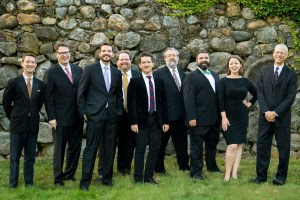Program: #19-02 Air Date: Dec 31, 2018
To listen to this show, you must first LOG IN. If you have already logged in, but you are still seeing this message, please SUBSCRIBE or UPGRADE your subscriber level today.
The Cambridge-based ensemble brings us a program of Ockeghem and his contemporaries; our special guest is the ensemble’s conductor, Scott Metcalfe.
MB1800, a NYC institution, is the city’s longest-running series devoted exclusively to early music. Since the series’ inception, concerts have been presented at Corpus Christi Church in Morningside Heights, giving audiences a uniquely satisfying experience.
Louise Basbas is the founder and director of the series. The New Yorker praised MB1800, calling it “the essential series.” Time Out New York remarked: “The resonant acoustics of Corpus Christi Church will deliver you into your own personal solitude.... Few other venues can claim this fusion of strong programming and quality auditory surroundings.”
Music Before 1800 is made possible by the New York State Council on the Arts with the support of Governor Andrew Cuomo and the New York State Legislature. MB1800 is also supported, in part, by the New York City Department of Cultural Affairs in partnership with the City Council.

Composer Info
Johannes Regis (c. 1425-1496), Barbingant (fl. c. 1450-75), Johannes Ockeghem (c. 1420-1497), Firminus Caron (fl. c. 1460-75)